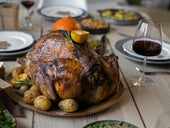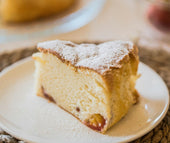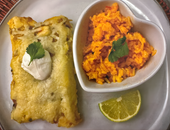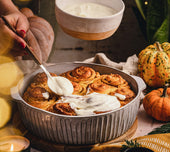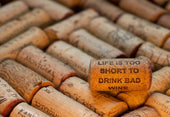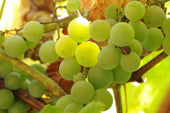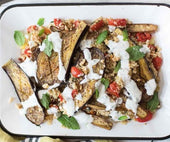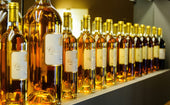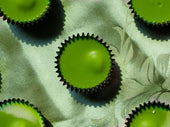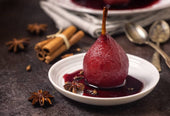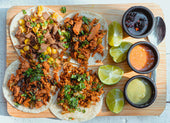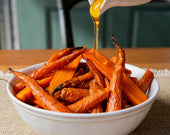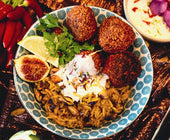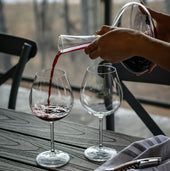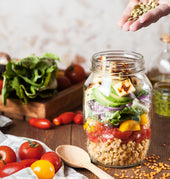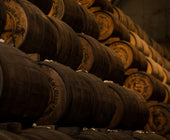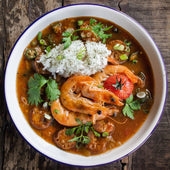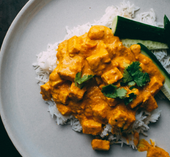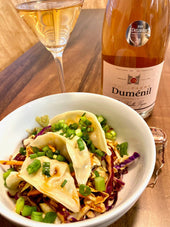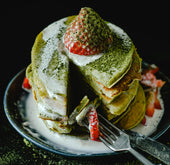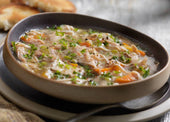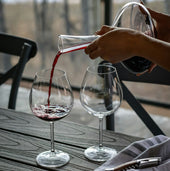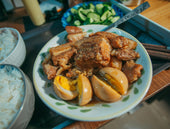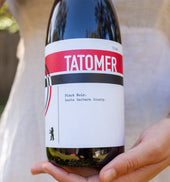
Festive Holiday Food & Wine Pairings: The International Edition Part I

By Iris Rowlee
Around the world Christmas is celebrated in different ways. We will take a look at four different locales and explore their traditions and a little of the history on how some of these customs came to be. While focusing here on the holiday of Christmas, and its different interpretations, I want to acknowledge and send cheer to those of all beliefs.
South Africa: Braai and Malva Pudding
In South Africa the holidays land in the summer, with hot weather and the youth on extended school break. This means many people head to the beach or the countryside to both celebrate and stay cool, and those who stay in the city revel outside on verdanas and in gardens and parks. Wherever the revelers are found, they will more likely than not be enjoying Braai, South Africa’s beloved BBQ, often roasting suckling pig, turkey, duck or beef with accompaniments like mince pies and yellow rice with raisins.
One of the classic desserts is Malva Pudding, a custardy, caramelized sponge cake sweetened with apricot preserve. It is a play on a Dutch recipe that came into being in the Cape area of South Africa during Colonial times in the late 1700s. The name is said to have come from the Malvasia (Madeira) wine the pudding was traditionally paired with. Others say it's because in Afrikaans “Malva lekker” means marshmallow and thus is a comparison to the pudding's texture. However, Malva on its own does not mean marshmallow but geranium and being created as a sidekick pudding to the wildly popular Malvasia Maderias of the time makes more sense to me. Regardless of its murky nomenclature, it's a dessert beloved by many and as much a part of popular tradition as caroling, popping Christmas gift crackers, and fireworks.
The day after Christmas, the celebration continues with more presents, picnics and outdoor reveling for Boxing Day, a public holiday with roots in the UK/Europe. Historically, on this day servants were given a day off, bosses and land owners would give their workers gift boxes, the able donated to the poor and the church opened their alms boxes for distribution. While enjoying the outdoors on these holidays many like to go to the country’s wine regions which have roots going back to 400 years.
Braai Pairing: Rustenburg, Cabernet Sauvignon, Stellenbosch 2017
Malva Pudding Pairing: Château Suduiraut, Sauternes 2016

România: Carnati, Sarmale and Cozonaci
Christmas is quite the holiday in Romania as the population is more than 90% Christian, with just over 80% of that number identifying as Orthodox Christians. They take part in the Nativity Fast, abstaining from meat, dairy and eggs in the 40 days leading up to Christmas. On December 24th this fast is broken with wine, Țuică (the local plum brandy), and pork galore. Leading up to this day, on December 20th, Ignat (St. Ignatius) Day, many Romanian families in the countryside sacrifice a pig and begin preparing dishes for the fast break, utilizing every part of the animal. Homemade pork sausages called Carnati (mixed meat), Caltabosi (offal), Sangerete (blood) are served as appetizers alongside specialties like Lebervurst, a pork pate of liver and fat. There are often pork meatball soups, smoked hams, baked pork Gammon, pork schnitzel, pork chops and the darling of the Romanian holiday table, Sarmale, a dish of pork and rice rolled in cabbage, slowly cooked with sauerkraut and tomato and commonly served with mamaliga (polenta), hot peppers, and a dollop of sour cream, although variations abound. A favored dessert is Cozonaci, a dense but fluffy, eggy, spiced sweet bread/cake loaf with bits of fruit, chocolate and nuts swirled in.
Now moving on to the drinks, it must be noted just how great of importance and clout Romania’s wine culture and history is. Romania is the 12th largest wine producer in the world, and the 5th largest in Europe. Romania is also one of the most ancient and long standing wine making regions in the world with a plethora of indigenous grape varieties, many of which are ancient themselves. It was in this greater region around the Black Sea that the wine grape species Vitis Vinifera first made its appearance as a domesticated cultivar with wine making evidence in Georgia being found that dates back to 6000 B.C. Along the Black Sea’s western shore, in present day Romania, winemaking can be traced back to about 4000 B.C.
Grapes proliferated into Romania’s interior, to the enchanting Carpathians Mountains and Transylvanian Highlands, an ideal topography for grapes providing diversity of soils and exposures, tempering valleys and peaks, foothills, and ample time allowed for genetic deviation and fortuitous crossing breeding leading to new grape varieties and thus creating great diversity. Before the phylloxera epidemic hit the country in the late 1880s, decimating vineyards, many people in the countryside worked producing wine. Wine regions were well established and each had their own distinct sets of indigenous varieties. As wine was and still is the drink of choice for Romanians the industry persevered. However things in the wine world took a dive again under Soviet control but since then innovation and renovation has taken stride. French varieties are dominant these days but many of the indigenous varieties hold strong.
The oldest grandma grape out of all of Romania’s varieties is said to be Fetească Neagră, or Black Maiden, which creates deeply hued, ruby wines with rich berry and spice aromas and great ageability, often reminiscent of a Bordeaux variety to many. Although incredibly fussy in the vineyard, it is much loved, found in all of the country’s wine regions, and is the traditional wine pairing to Sarmale. The wine region of Contari has been known since the 1500s for a botrytised, amber dessert wine called Grasă de Cotnari, that was once famed across Europe and rivaled Hungarian Tokay. It makes a perfect accompaniment to that aforementioned Cozonaci cake.
Carnati Pork Sausage Pairing: Truchard Estate, Carneros, Pinot Noir 2017
Sarmale Pairing: Chateau Phelan Segur, Saint-Estephe 2011

This article was contributed by Iris Rowlee. She is a Court of Masters certified Sommelier, a Vinitaly International Academy Italian Wine Ambassador, and a 3iC Certified Educator.


